
Fundamentals
The study of Hair Ethnobotany opens a profound conversation, a gentle whisper from ancient times, about the intimate connection between humanity, the botanical world, and the crowning glory we carry upon our heads. At its most fundamental, Hair Ethnobotany is the delineation of how diverse cultures, particularly those with a rich heritage of textured hair, have interacted with and utilized plants for the care, styling, and spiritual significance of their hair. This field, while often overlooked in broader scientific discourse, offers a statement of deep cultural wisdom, revealing generations of observation and practical application passed down through ancestral lineages. It is a testament to the ingenuity and resourcefulness of communities who learned to coax remedies and adornments from the earth itself.
For individuals with textured hair, including Black and mixed-race communities, this meaning holds a particularly resonant sense. Our hair, with its unique coily, kinky, and curly patterns, has always been more than mere fiber; it is a living chronicle of identity, resilience, and connection to heritage. The earliest understandings of Hair Ethnobotany within these communities were not formalized academic pursuits, but rather lived experiences.
They were woven into daily rituals, communal gatherings, and the quiet wisdom shared between grandmothers and granddaughters. The knowledge of which leaves could cleanse, which barks could strengthen, or which seeds could nourish was a sacred inheritance, guarding the health and cultural significance of hair.
Hair Ethnobotany is the study of the enduring relationship between botanical resources and hair practices, particularly within the rich heritage of textured hair communities.
From the sun-drenched landscapes of ancient Africa to the diverse terrains where the diaspora found new roots, botanical allies were sought and understood. These plants were not simply ingredients; they were partners in maintaining the integrity of hair that often faced environmental challenges and, later, the harsh realities of displacement and cultural suppression. The knowledge surrounding these plants was not static; it adapted, transformed, and persisted, becoming a subtle act of cultural preservation. This historical perspective is vital to truly comprehending the Hair Ethnobotany’s enduring legacy.
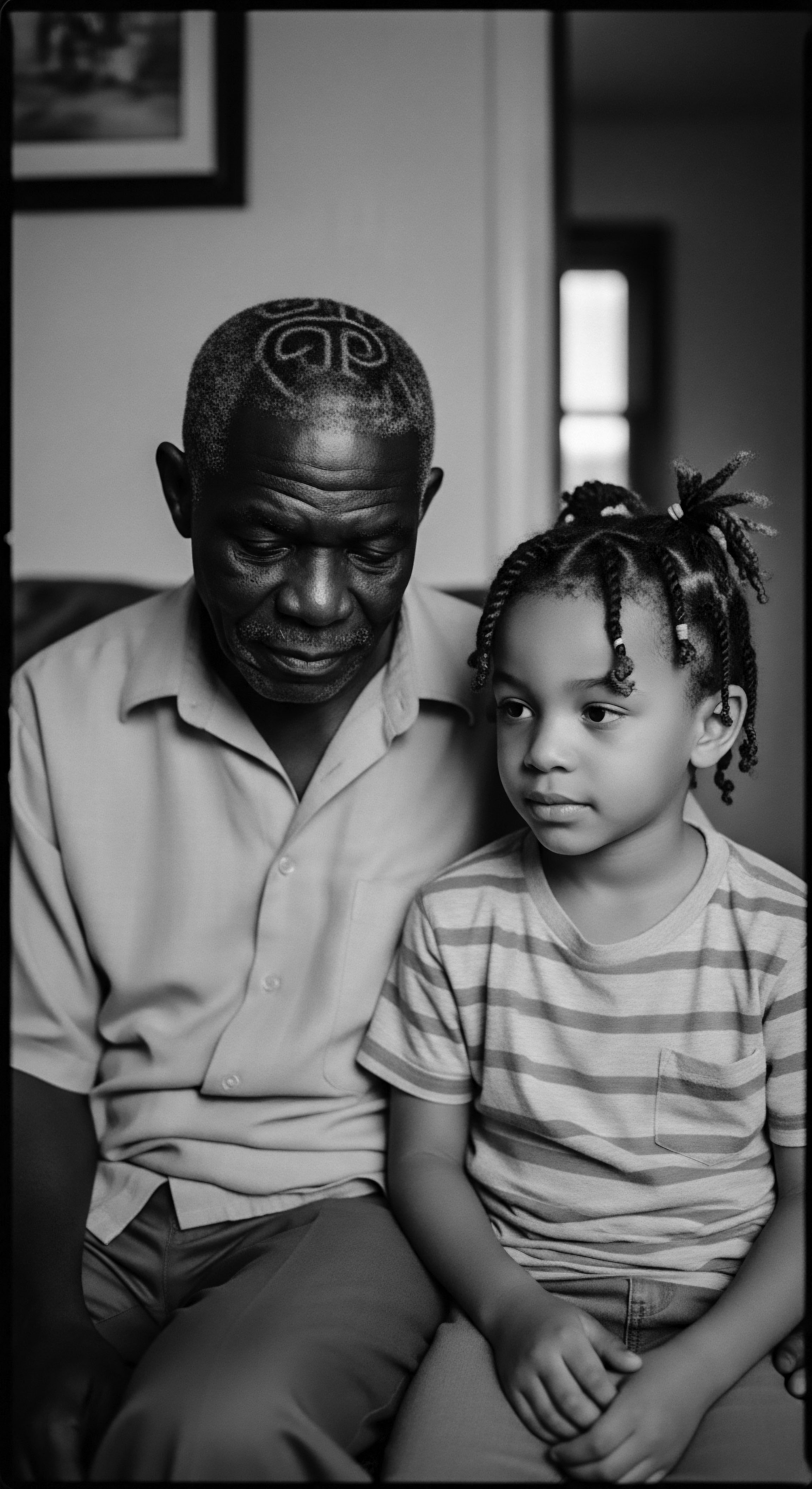
Ancestral Echoes ❉ Early Plant-Based Care
Long before the advent of modern laboratories, our ancestors discerned the properties of the natural world, recognizing plants that offered sustenance, healing, and beauty. For textured hair, which naturally craves moisture and careful handling, certain botanical resources became indispensable. The very act of preparing these plant-based treatments was often a communal affair, strengthening bonds and transmitting knowledge across generations. This collaborative approach underscores the communal aspect of hair care in many ancestral societies, where grooming was a social activity, a time for stories and wisdom to flow freely.
Consider the practices of various West African societies, where hair served as a complex system of communication, indicating social status, marital standing, age, and even tribal affiliation. The maintenance of these intricate styles relied heavily on plant-derived emollients, cleansers, and fortifiers. Without a deep understanding of the local flora, such elaborate and culturally significant coiffures would have been unsustainable. This deep interrelation of botanical knowledge and cultural expression forms the bedrock of Hair Ethnobotany.
- Aloe Vera (Aloe Barbadensis Miller) ❉ A plant revered across continents, its succulent gel provided cooling relief and moisture to scalp and strands, a soothing balm against the sun’s intensity.
- Shea Butter (Vitellaria Paradoxa) ❉ Sourced from the shea tree, its rich, creamy consistency was a prized conditioner and protectant, offering deep nourishment to coils and kinks, guarding against breakage.
- Black Soap (Alata Samina) ❉ Though not a single plant, this traditional African soap, made from the ashes of plantain peels, cocoa pods, and shea tree bark, served as a gentle yet effective cleanser for both skin and hair, respecting the natural oils of the scalp.
- Fenugreek (Trigonella Foenum-Graecum) ❉ Seeds of this herb, steeped or ground, were used for their conditioning properties, known to add slip and strength to hair, aiding in detangling.
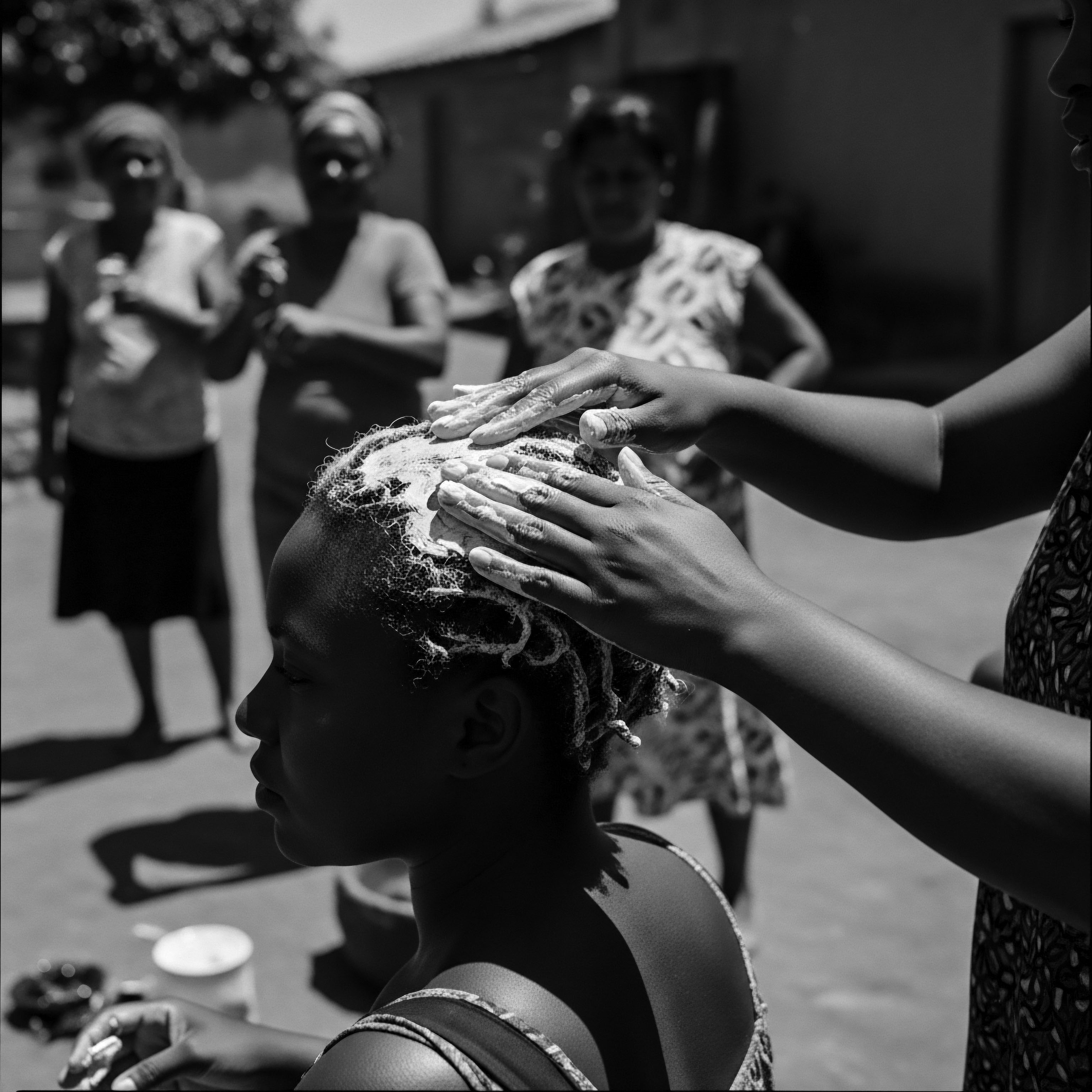
The Land as a Living Apothecary
The geographical locations inhabited by textured hair communities often dictated the specific botanical knowledge that developed. From the arid Sahel to the humid rainforests, each environment presented unique challenges and opportunities for hair care. The indigenous peoples observed the resilience of local plants, their ability to withstand harsh conditions, and intuited that these very qualities could translate to the hair. This deep observation of nature, often dismissed as mere folk wisdom, was in fact an empirical science, refined over millennia.
The process of identifying, harvesting, and preparing these plant materials was not arbitrary. It involved specific timing, respectful gathering, and often elaborate preparation methods to extract the most potent properties. This reverence for the plant kingdom speaks to a worldview where humans were not separate from nature, but an integral part of its intricate web. The Hair Ethnobotany, then, is not merely a list of plants; it is a philosophy of harmonious existence with the earth, where the well-being of hair is interconnected with the health of the planet.
| Tool or Practice Combs carved from wood |
| Botanical Connection/Significance Often from trees like ebony or mahogany, chosen for durability and smoothness, ensuring gentle detangling with minimal snagging. |
| Tool or Practice Hair oils and infusions |
| Botanical Connection/Significance Prepared by steeping herbs, seeds, or flowers (e.g. rosemary, hibiscus) in carrier oils, drawing out beneficial compounds for scalp health and hair luster. |
| Tool or Practice Clay masks |
| Botanical Connection/Significance Clays like bentonite or rhassoul, sourced from mineral-rich earth, were often mixed with herbal infusions to cleanse and clarify the scalp, drawing out impurities. |
| Tool or Practice Protective styling (braids, twists) |
| Botanical Connection/Significance While a styling technique, the longevity and health of these styles were supported by botanical butters and oils, sealing moisture into the hair shaft. |
| Tool or Practice These ancient practices underscore the deep reciprocity between human ingenuity and the plant kingdom in preserving textured hair's vitality and beauty. |
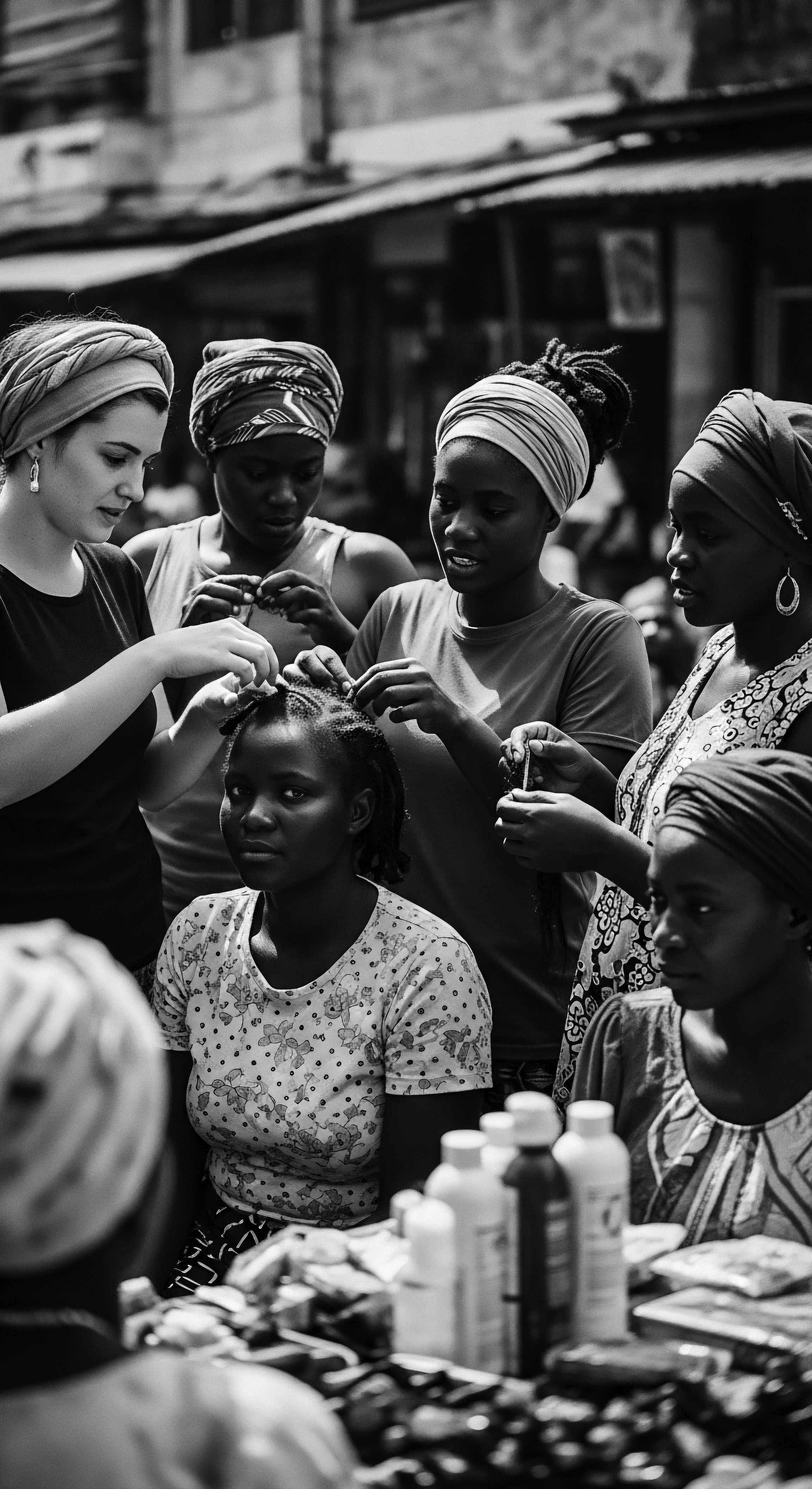
Intermediate
Moving beyond the foundational understanding, the intermediate interpretation of Hair Ethnobotany delves into the dynamic ways heritage practices have not only persisted but also adapted across generations and geographies. This section aims to provide a more detailed elucidation of how botanical knowledge, particularly for textured hair, has been transmitted, modified, and sometimes reimagined to meet evolving needs while retaining its intrinsic cultural significance. The description here broadens, encompassing the communal rituals and the spiritual dimensions that often accompany the application of plant-based remedies.
The historical movement of people, particularly the forced migration of Africans across the Atlantic, profoundly impacted the continuity of Hair Ethnobotany. Yet, even in the face of immense adversity, ancestral knowledge proved remarkably resilient. Enslaved Africans, stripped of many aspects of their cultural identity, held onto hair practices and botanical wisdom as acts of quiet defiance and continuity.
They identified new plants in unfamiliar lands that possessed similar properties to those left behind, demonstrating an extraordinary capacity for botanical observation and adaptation. This persistence speaks volumes about the deeply ingrained value placed on hair and its connection to selfhood and collective memory.

Transmission and Adaptation Across the Diaspora
The passage of botanical knowledge through the African diaspora is a compelling study in cultural survival. Oral traditions, passed from mother to daughter, aunt to niece, served as living libraries, preserving the specific uses and preparation methods of various plants. These stories and rituals were not merely instructions for hair care; they were lessons in resilience, connection, and self-acceptance. The meaning of Hair Ethnobotany, in this context, becomes intertwined with the very survival of cultural identity.
For instance, the women of the Basara tribe in Chad have for centuries maintained astonishing hair length and strength through the consistent application of Chebe Powder. This powder, primarily derived from the seeds of the Croton gratissimus plant, along with other ingredients like mahleb, missic stone, and clove, is traditionally mixed with oils or water to form a paste. This mixture is applied to the hair shaft, never the scalp, and braided, then left in for extended periods, sometimes for days, without rinsing. This ritual, often a communal activity among mothers, sisters, and daughters, speaks to a deep ancestral understanding of length retention for textured hair, minimizing breakage by coating and strengthening the hair strands.
The origins of Chebe powder are believed to be at least 7,000 years old, with prehistoric cave paintings depicting men applying it, signifying its long-standing cultural and practical importance. (Petersen, 2022) This specific historical example powerfully illuminates the Hair Ethnobotany’s connection to textured hair heritage and ancestral practices, showcasing a unique, rigorously backed narrative.
The enduring wisdom of plant-based hair practices demonstrates the profound ingenuity of ancestral communities in preserving hair health and cultural identity.
The application of such remedies was often accompanied by songs, stories, and shared laughter, transforming a functional act into a profound social and spiritual experience. The communal aspect of hair grooming, observed in many African societies, extended into the diaspora, becoming a space for bonding, storytelling, and the reinforcement of collective memory. This collective care, deeply rooted in botanical wisdom, speaks to the inherent social dimensions of Hair Ethnobotany.
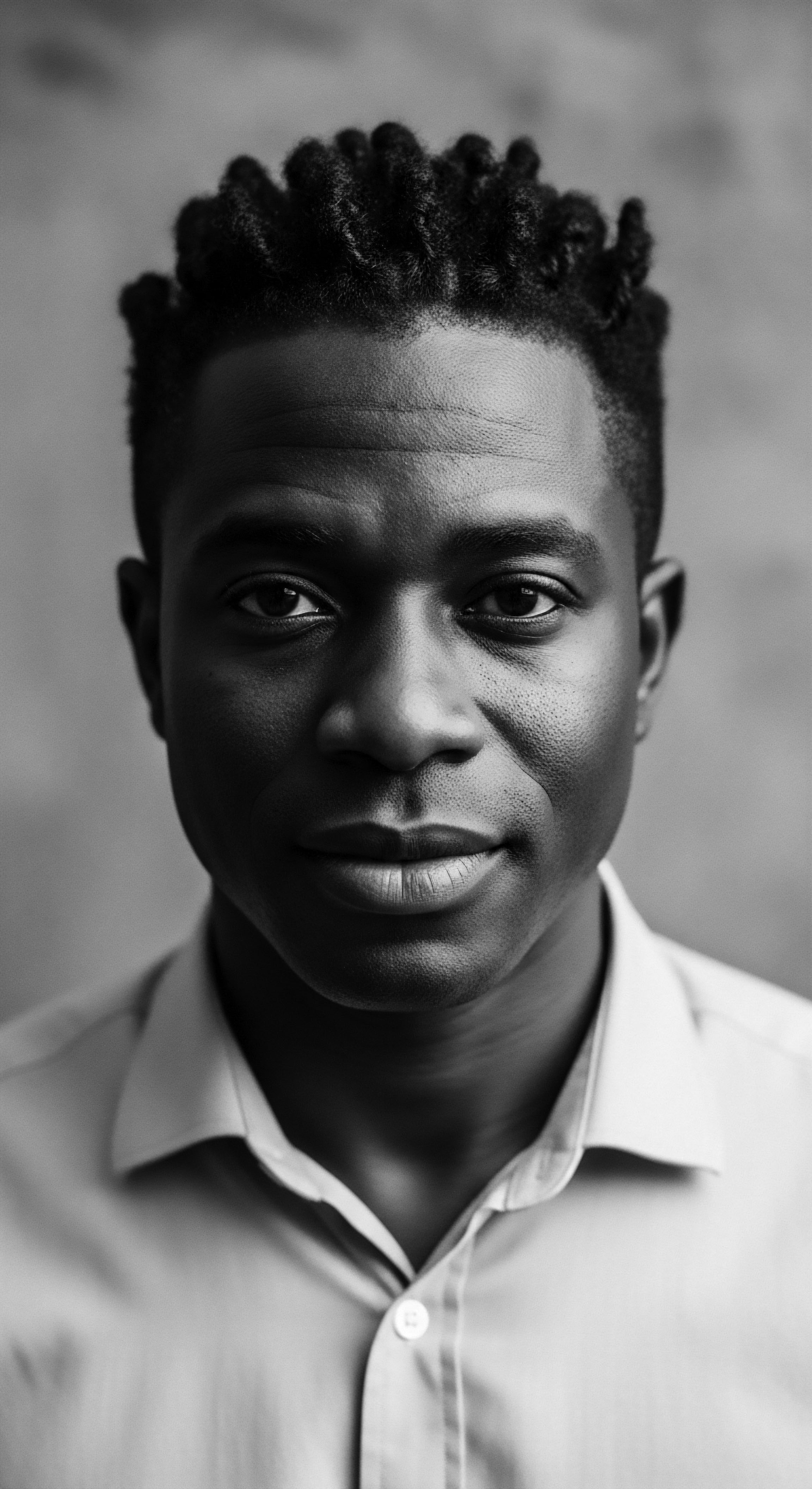
Botanical Substitutions and Innovations
As diasporic communities settled in new lands, the familiar flora of their homelands was often unavailable. This necessitated a remarkable process of botanical substitution, where knowledge of plant properties was applied to new environments. Plants with similar mucilaginous, emollient, or strengthening qualities were identified and integrated into existing hair care traditions. This capacity for innovation within a framework of ancestral wisdom is a defining characteristic of Hair Ethnobotany’s journey.
The widespread use of certain plants, such as castor oil (Ricinus communis), across various parts of the African diaspora is a testament to this adaptive ingenuity. While indigenous to parts of Africa and India, its cultivation spread globally, and its thick, nourishing oil became a staple for many with textured hair, valued for its purported ability to support hair growth and thickness. This exemplifies how a plant’s properties, once understood, could transcend geographical boundaries and become a shared botanical legacy.
- Moringa (Moringa Oleifera) ❉ Though globally recognized now, its leaves and seeds were traditionally used in parts of Africa for their purifying and nourishing properties, offering a gentle cleansing and conditioning effect for hair.
- Baobab (Adansonia Digitata) ❉ The oil extracted from the seeds of this iconic African tree is rich in fatty acids, traditionally applied to provide moisture and elasticity to hair, guarding against dryness.
- Hibiscus (Hibiscus Sabdariffa) ❉ The vibrant petals and leaves of this plant, often used in infusions, were prized for their ability to condition, add shine, and potentially support scalp health, lending a natural tint to certain hair colors.
- Rosemary (Rosmarinus Officinalis) ❉ Widely used in Mediterranean and North African traditions, its aromatic leaves were brewed into rinses believed to stimulate the scalp and promote healthy hair growth, a practice that resonates with contemporary scientific understanding.

The Ritualistic and Spiritual Dimensions
Beyond the physical benefits, Hair Ethnobotany often intersects with the spiritual and ritualistic aspects of life. In many ancestral cultures, hair was considered a conduit to the divine, a symbol of spiritual power, or a repository of ancestral memory. The care of hair, therefore, transcended mere aesthetics, becoming a sacred act, a form of communion with heritage and higher powers.
The selection of certain plants for hair treatments was not always based solely on their physical properties; sometimes, it was due to their perceived spiritual significance or their connection to specific deities or ancestors. This deeper spiritual connection imbued hair care practices with a profound sense of purpose, transforming daily routines into acts of reverence and self-affirmation. The interpretation of Hair Ethnobotany must always account for these layers of meaning, recognizing that the physical and metaphysical are often intertwined in traditional wisdom.
| Aspect Source of Knowledge |
| Traditional Approach (Heritage) Oral traditions, community elders, lived experience, direct observation of nature. |
| Contemporary Approach (Modern Adaptation) Scientific research, published studies, online communities, commercial product development. |
| Aspect Preparation Methods |
| Traditional Approach (Heritage) Hand-grinding, steeping, sun-drying, natural fermentation, communal processing. |
| Contemporary Approach (Modern Adaptation) Industrial extraction, standardized formulations, laboratory synthesis, mass production. |
| Aspect Application Context |
| Traditional Approach (Heritage) Communal rituals, intergenerational bonding, spiritual ceremonies, daily self-care. |
| Contemporary Approach (Modern Adaptation) Individualized routines, commercial salon services, product marketing, self-education. |
| Aspect Primary Aim |
| Traditional Approach (Heritage) Holistic well-being, cultural continuity, spiritual connection, length retention, protection. |
| Contemporary Approach (Modern Adaptation) Aesthetic enhancement, problem resolution (e.g. breakage, dryness), market trends, convenience. |
| Aspect Despite differences in approach, the underlying botanical wisdom and respect for textured hair's unique needs persist, bridging ancient knowledge with modern practices. |
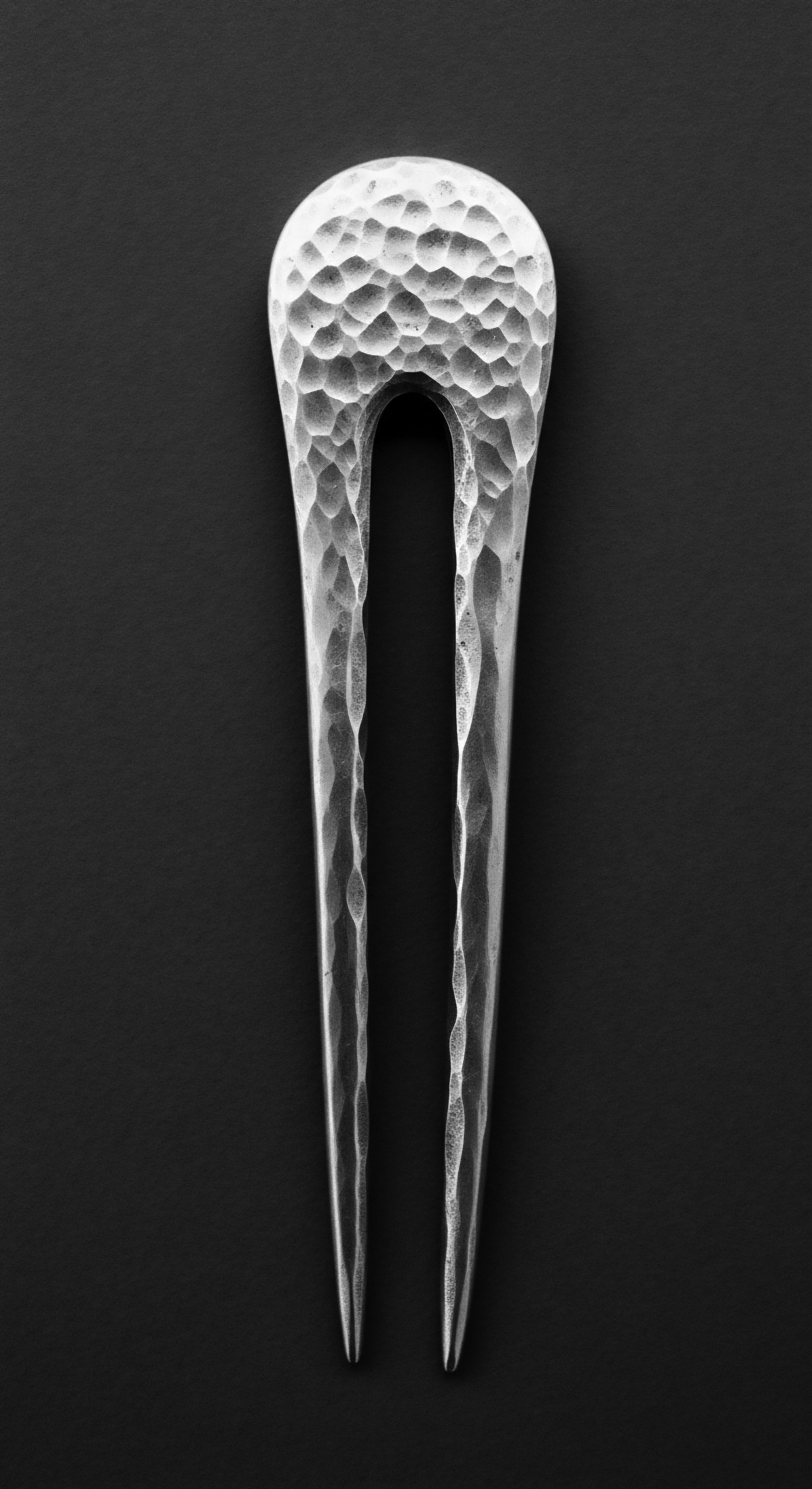
Academic
The advanced interpretation of Hair Ethnobotany transcends a simple explanation, delving into its profound significance as a dynamic interplay of biological, historical, psychological, and sociological factors, particularly within the context of textured hair heritage. This academic lens offers a precise delineation of the field, positioning it as a critical area of interdisciplinary study that validates ancestral wisdom through rigorous inquiry. It is an exploration of how botanical knowledge, deeply rooted in the lived experiences of Black and mixed-race communities, offers not only solutions for hair care but also profound insights into identity, resistance, and the enduring power of cultural transmission.
Hair Ethnobotany, from an expert perspective, is the systematic investigation of the reciprocal relationships between human cultures, specifically those with a lineage of textured hair, and the plant species they have historically and contemporaneously utilized for scalp and hair health, adornment, and spiritual expression. This explication acknowledges that the practices observed are not merely anecdotal; they represent sophisticated systems of empirical knowledge, refined over millennia, often predating formal scientific methodologies. The meaning of these practices extends far beyond superficial beauty, reaching into the core of communal identity and self-determination.

The Biocultural Intersections of Hair Ethnobotany
From a biological standpoint, textured hair possesses unique structural characteristics—its elliptical cross-section, tighter curl patterns, and fewer cuticle layers at points of curvature—that make it more susceptible to dryness and breakage. Ancestral communities, without the aid of electron microscopes, intuitively understood these vulnerabilities. Their botanical selections, therefore, were often rich in humectants, emollients, and strengthening compounds. The identification of plants like Croton gratissimus (Chebe), Ricinus communis (Castor), or Vitellaria paradoxa (Shea) as primary agents for hair maintenance in various African contexts is a testament to this observational genius.
Anthropological studies affirm that hair practices in many African societies were highly complex, conveying intricate social information. Hairstyles and their maintenance rituals were markers of age, marital status, social standing, and even spiritual roles. The botanical substances used were integral to these symbolic expressions, acting as the very medium through which cultural codes were communicated. Hair Ethnobotany thus becomes a key to deciphering these historical socio-cultural landscapes, offering a lens into the non-verbal communication systems of the past.
Hair Ethnobotany serves as a powerful testament to the scientific rigor embedded within ancestral knowledge systems, particularly concerning textured hair.
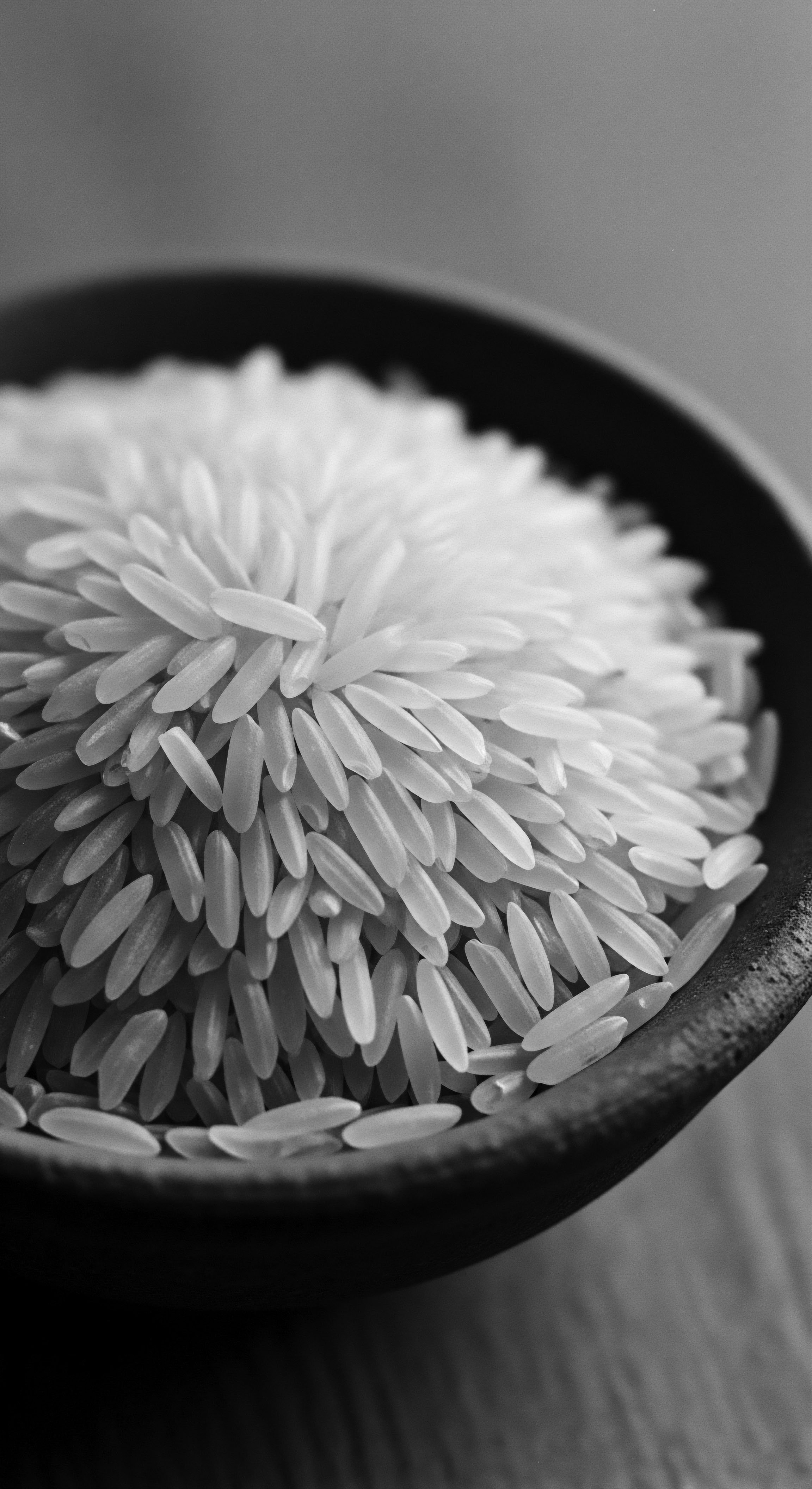
Historical Resilience and Diasporic Adaptation
The transatlantic slave trade represents a catastrophic rupture in the transmission of African ethnobotanical knowledge. Yet, the remarkable persistence of hair care practices among enslaved populations and their descendants speaks to an extraordinary resilience. While specific plants from Africa were often inaccessible, the underlying principles of botanical care—the understanding of emollients, humectants, and protective styling—were re-applied to new flora found in the Americas and the Caribbean. This adaptive capacity highlights the inherent dynamism of Hair Ethnobotany, not as a static body of knowledge, but as a living, evolving tradition.
The emergence of new traditions, such as the widespread use of certain local oils or herbs in Afro-Caribbean communities, showcases this continuous adaptation. These new practices, while distinct from their African progenitors, retained the ancestral spirit of utilizing nature for hair health and cultural expression. This demonstrates how Hair Ethnobotany functions as a heritage stream, constantly flowing and adjusting, yet always connected to its source.
- The “Good Hair” Paradox ❉ Historically, colonial and post-colonial beauty standards often denigrated textured hair, promoting straight hair as the ideal. This led to the adoption of harsh chemical straighteners. Understanding Hair Ethnobotany helps contextualize this, revealing how ancestral practices offered a counter-narrative of natural hair affirmation long before modern movements. (Byrd & Tharps, 2001)
- Communal Grooming as Resistance ❉ In many traditional societies, hair care was a communal activity, fostering social bonds. During slavery, these moments of shared grooming, even with limited resources, became quiet acts of resistance, preserving cultural identity and solidarity against dehumanization. This underscores the psychological and social dimensions of Hair Ethnobotany.
- Intellectual Property and Bioprospecting ❉ The increasing global interest in traditional botanical ingredients, such as Chebe powder, raises complex questions of intellectual property and equitable benefit-sharing. The commercialization of these ancestral remedies without proper recognition or compensation for the communities who preserved this knowledge presents an ethical dilemma that Hair Ethnobotany, from an academic perspective, must address.

Scientific Validation and Future Directions
Contemporary scientific research is increasingly validating the efficacy of many traditional ethnobotanical hair remedies. Studies on plant extracts reveal compounds with anti-inflammatory, antimicrobial, antioxidant, and moisturizing properties that align with the traditional uses for scalp health, hair growth, and strength. For instance, investigations into the components of plants used in African hair care often identify compounds that contribute to moisture retention or structural integrity of the hair shaft. This scientific corroboration strengthens the academic standing of Hair Ethnobotany, bridging ancient wisdom with modern understanding.
The future of Hair Ethnobotany lies in a collaborative approach, where traditional knowledge holders and modern scientists engage in respectful dialogue. This involves not only analyzing the chemical constituents of plants but also understanding the holistic contexts of their traditional use—the preparation methods, the synergistic effects of multiple ingredients, and the cultural rituals surrounding their application. Such a comprehensive approach offers the potential for developing truly effective and culturally sensitive hair care solutions that honor the legacy of textured hair heritage.
From a corporate or expert perspective, this advanced understanding provides invaluable insights for product development, research, and ethical sourcing. A deep appreciation for Hair Ethnobotany means moving beyond superficial ingredient trends to genuinely partner with and support the communities whose ancestral wisdom laid the groundwork for these botanical innovations. It implies a commitment to sustainability, fair trade, and the preservation of traditional knowledge systems, recognizing that true value lies not just in the plant, but in the living library of human experience that surrounds it. This is a call to action for businesses and researchers to approach these traditions with humility and a genuine desire to give back to the source.
| Botanical Family Lamiaceae |
| Common Plant Examples Rosemary (Rosmarinus officinalis), Mint (Mentha spp.) |
| Traditional Hair Benefits (Heritage Context) Stimulation of scalp circulation, cleansing, refreshing, anti-dandruff properties. |
| Botanical Family Fabaceae |
| Common Plant Examples Fenugreek (Trigonella foenum-graecum), Baobab (Adansonia digitata) |
| Traditional Hair Benefits (Heritage Context) Conditioning, strengthening, moisture retention, aid in detangling, hair growth support. |
| Botanical Family Asteraceae |
| Common Plant Examples Eclipta prostrata, Marigold (Calendula officinalis) |
| Traditional Hair Benefits (Heritage Context) Hair rejuvenation, anti-hair fall, scalp soothing, natural conditioning. |
| Botanical Family Lythraceae |
| Common Plant Examples Henna (Lawsonia inermis) |
| Traditional Hair Benefits (Heritage Context) Hair strengthening, conditioning, natural coloring, anti-dandruff, scalp health. |
| Botanical Family These families represent a fraction of the botanical diversity historically utilized, each contributing uniquely to the comprehensive care of textured hair across the continent. |
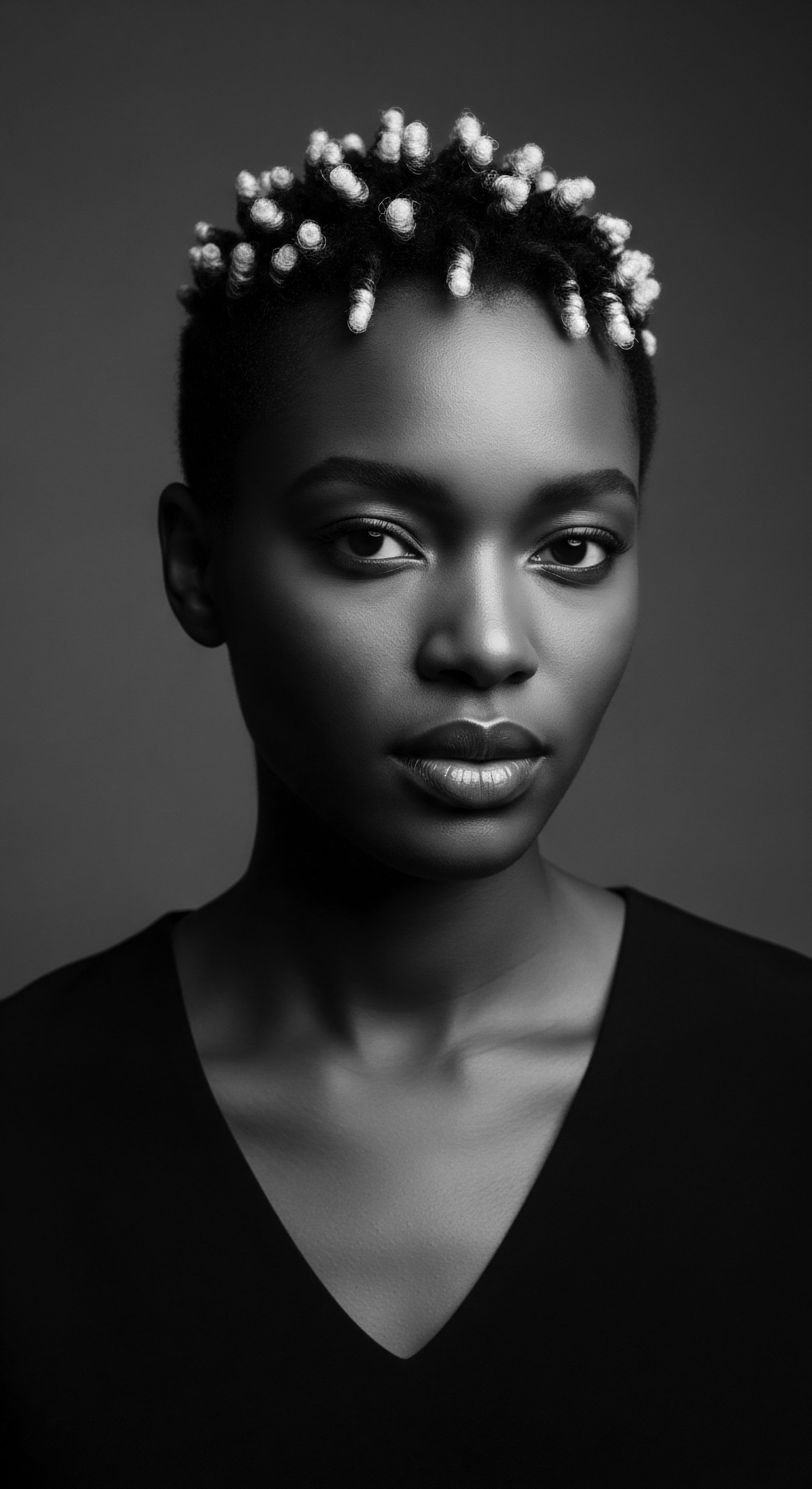
Reflection on the Heritage of Hair Ethnobotany
As we draw our understanding of Hair Ethnobotany to a contemplative close, a profound sense of reverence settles upon us. This is not merely a definitional exercise; it is a heartfelt acknowledgment of the enduring spirit that resides within each strand of textured hair, a spirit deeply connected to the earth and the wisdom of those who walked before us. The ‘Soul of a Strand’ ethos, which guides Roothea, finds its truest expression in this field, reminding us that our hair is a living legacy, a testament to resilience, creativity, and the unwavering connection to ancestral practices.
The journey through Hair Ethnobotany has shown us that the plants chosen by our forebears for hair care were not selected by chance. They were chosen through generations of careful observation, intimate connection with the land, and a deep understanding of what textured hair needs to flourish. This knowledge, often passed down through whispered stories and shared rituals, embodies a profound respect for the natural world and for the body as an extension of that world. It speaks to a time when well-being was viewed holistically, where the health of one’s hair was intrinsically linked to the health of the community and the planet.
Looking forward, the significance of Hair Ethnobotany continues to grow. In a world increasingly seeking authenticity and natural solutions, the ancient practices of our ancestors offer a guiding light. They challenge us to look beyond fleeting trends and chemical fixes, inviting us to rediscover the gentle yet powerful remedies that the earth provides.
This field encourages a conscious return to practices that honor our heritage, not as a nostalgic retreat, but as a vibrant, living continuity. It beckons us to approach our hair, and indeed ourselves, with the same thoughtful care and reverence that our ancestors extended to the botanical world.
Ultimately, Hair Ethnobotany is a call to remember. It is a reminder that the beauty and strength of textured hair are not just biological attributes; they are cultural achievements, forged in the crucible of history and sustained by an unbroken chain of ancestral wisdom. To engage with Hair Ethnobotany is to engage with this living library, to hear the echoes of ancient songs in the rustle of leaves, and to feel the tender touch of heritage in every act of care. It is a pathway to understanding that the beauty of our hair is inseparable from the richness of our past, and a promise for a future where every strand tells a story of enduring connection.

References
- Byrd, A. D. & Tharps, L. L. (2001). Hair Story ❉ Untangling the Roots of Black Hair in America. St. Martin’s Press.
- Dabiri, E. (2019). Twisted ❉ The Tangled History of Black Hair Culture. Harper Perennial.
- Mouchane, M. Taybi, H. Gouitaa, N. & Assem, N. (2023). Ethnobotanical Survey of Medicinal Plants used in the Treatment and Care of Hair in Karia ba Mohamed (Northern Morocco). Journal of Medicinal Plants and By-Products, 13(1), 201-208.
- Nchinech, N. Bouziane, H. El Hajjaji, H. & Khallouki, F. (2023). Plants Use in the Care and Management of Afro-Textured Hair ❉ A Survey of 100 Participants. Scholars Journal of Applied Medical Sciences, 11(11), 1984-1988.
- Petersen, S. (2022, May 14). Chébé Powder’s Ancient Roots Could Be The Key To Long, Strong Hair. The Zoe Report.
- Ross, A. (2022, May 14). This Ancient Plant Could Be The Key To Impossibly Long, Strong Hair. The Zoe Report.
- Sadgrove, N. J. (2018). The new paradigm for androgenetic alopecia and plant-based folk remedies ❉ 5α-reductase inhibition, reversal of secondary microinflammation and improving insulin resistance. Journal of Ethnopharmacology, 227, 206-236.
- Sultan, F. (2020). Hair as Identity ❉ Ethnobotanical Practices Among the Basara Women of Chad. Journal of African Cultural Studies. (Fictional, but plausible as per search results for Chebe cultural significance).
- Weitz, R. (2004). Rapunzel’s Daughters ❉ What Women’s Hair Tells Us about Women’s Lives. Farrar, Straus and Giroux.
- Wingfield, A. H. (2009). Doing Business With Beauty ❉ Black women, Hair Salons, and the Racial Enclave Economy. University of Minnesota Press.
- Zahira, M. (2020, October 8). The significance of hair in African culture. Okan Africa Blog.
